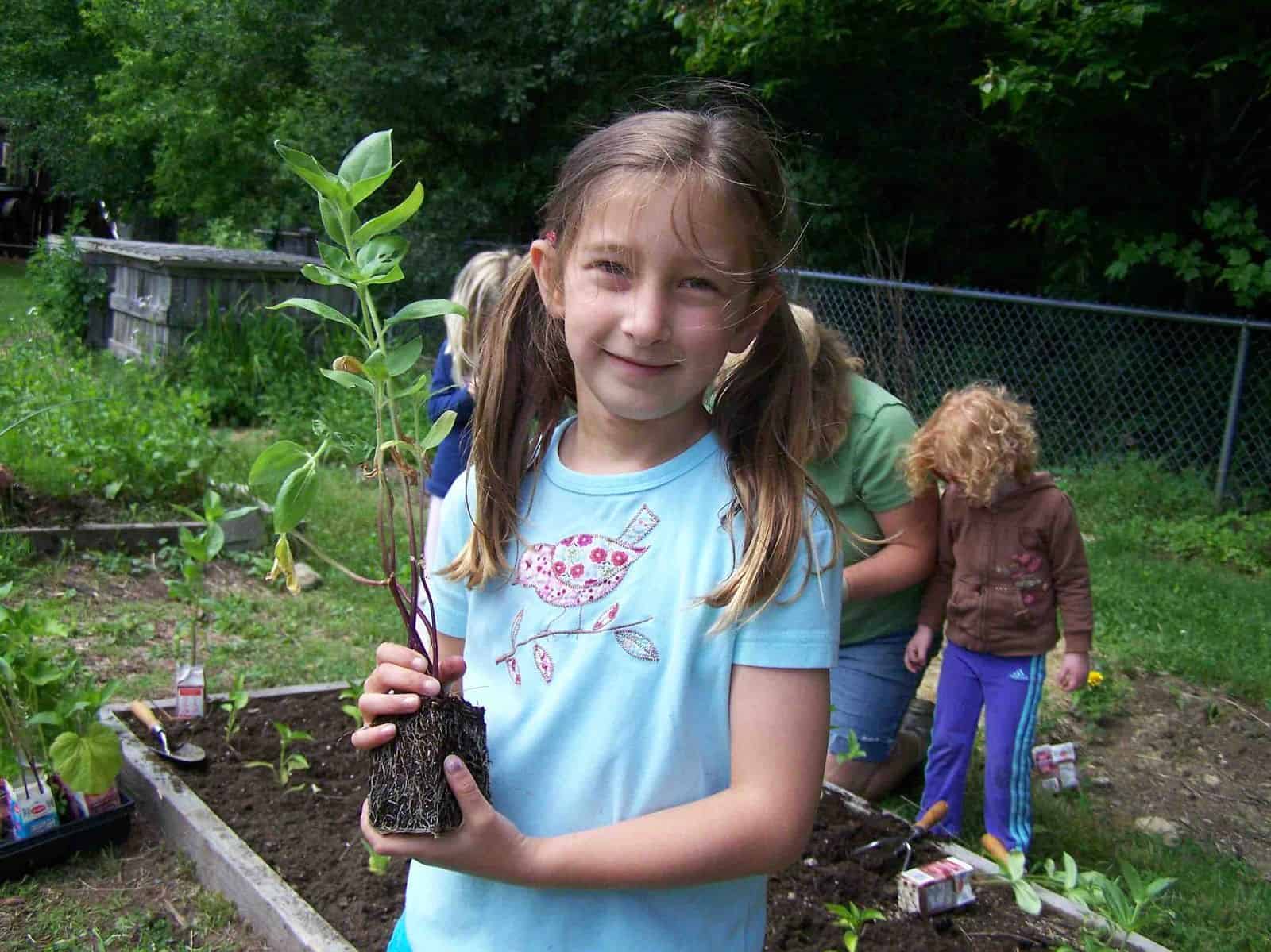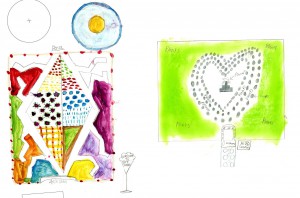By Jana Bryan Wunderle, JMMDS
There is excellent research describing the importance of growing vegetables with children: giving them access to healthy food, teaching them about eating locally, connecting with nature, spending “unplugged” time outdoors… the benefits go on and on. Read more about how one Vermont elementary school is giving students this invaluable experience.
Photo by then second-grader Zoe Svec, courtesy of CAES’ Grateful Garden Blog.
I am involved in children’s vegetable gardens here at JMMDS (designing them is so much fun!) and through volunteering at my children’s school. The garden on our public school’s property is affectionately named The Grateful Garden. This will be the third year that we offer opportunities for all students—and community members—to be involved. The children not only help with gardening chores; they participate throughout the process: creating the garden, raising support and awareness, reaping the harvest, and enjoying a sense of ownership.
Our year kicks off in February with our annual seed sale, sponsored by Fedco. The class that sells the most seeds gets a yogurt smoothie party!
Also in February, we hold a design workshop with the 5th & 6th graders. They each receive a Grateful Garden plan on which they can draw fencing, planting patterns, or water elements. They give us very imaginative ideas.
Two student ideas from the original design workshop. Images courtesy of Jana Bryan Wunderle.
In the spring we coordinate a seed-starting workshop. Each student starts one seed for the school garden and one to take home.

Economical and earth-friendly methods for seed-starting: make your own newspaper pots or use recycled containers, and mix up a big batch of homemade seed-starting mix in a giant bin. Photos: Wendy Svec, courtesy of CAES’ Grateful Garden Blog.
At planting time, we coordinate with the different classrooms to allow the students to help us plant. They follow the garden plan and work together to get the seeds or seedlings in the ground. Believe me, elementary school kids can do quite a lot of gardening in a half hour!

Late May in Vermont means it’s time to plant pumpkins and thin lettuce. Photos: Wendy Svec, courtesy of CAES’ Grateful Garden Blog.
The teachers are encouraged to use the garden as an extension of their classroom. There are endless ways do this: nature drawing, math lessons, science testing, or an outdoor room for reading, to name a few.

Garden concept from the National Gardening Association’s guide, Steps To A Bountiful Kids’ Garden.
Throughout the growing season we meet as a garden club, sometimes during the day to involve more students and sometimes after school. In the fall, we harvest as a school community in much the same way as we planted. Not only do we harvest vegetables, but also beautiful flowers for the teachers’ classrooms.

The flower harvest. Photos: Wendy Svec, courtesy of CAES’ Grateful Garden Blog.
Kids love to harvest—it’s magical! The harvest is appreciated in the school cafeteria and enjoyed by hungry students and teachers. We also freeze and save food for fundraising dinners (like the one we hold to raise money to send the kids to a special week at Keewaydin Environmental Education Center).

Photos: Wendy Svec, courtesy of CAES’ Grateful Garden Blog.
…and having all the kids help with clean-up at the end of the season is the best!

Photos: Wendy Svec, courtesy of CAES’ Grateful Garden Blog.
The Grateful Garden even has its own blog, highlighting the fun throughout the year, using a little technology to support and share our gardening experiences. If you have some time, please take a look; we have a lot more great photos and information about our seed sale!
Along with all the nutritional aspects of the school vegetable garden, the community and sense of pride are also so important. My first-hand experience strengthens the points made in all the research and makes my life—and the lives of the wonderful kids around me—a whole lot healthier and happier.









Bravo, Jana!
This is really a wonderful project with such a great name, The Grateful Garden. I really loved the kids drawings too. It looked like team work and learning all bundled together with fun.
Thanks for sharing! I am trying to get a school garden started at my kid’s elementary school. The Grateful Garden example will help me show our school community how this can be done, and also be managed successfully. Did you have any specific hurdles to getting this project off the ground? If so, how did you overcome them?
I am so happy that our school garden can be an inspiration for others. The NGA’s guide “Steps to a Bountiful Kids Garden” was very helpful. Having a few parents and teachers committed to the idea is important. There a a lot of small hurdles – but with team work, it is fun!
This is such a wonderful project of which I’ve had the pleasure of seeing in person. The thought process, hard work and the dedication of parents, teachers and kids involved are truly amazing. Wishing you all continued success!
Jana’s “Proud” Mom